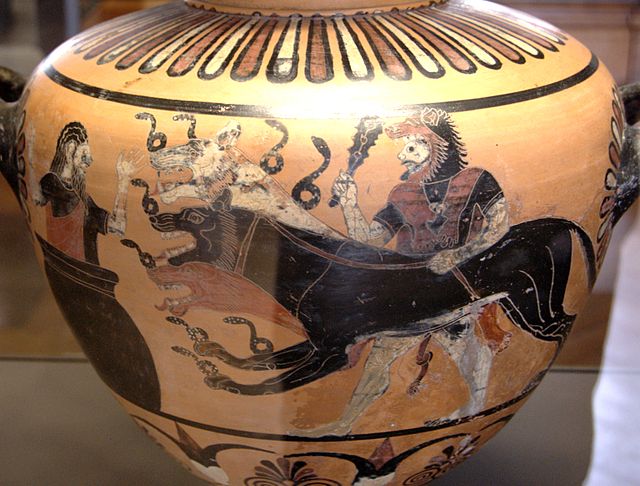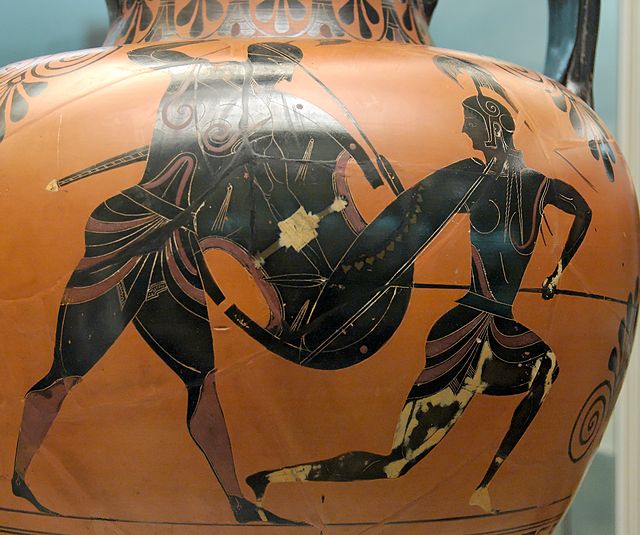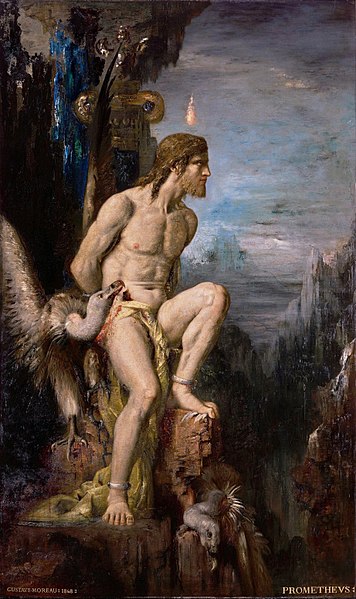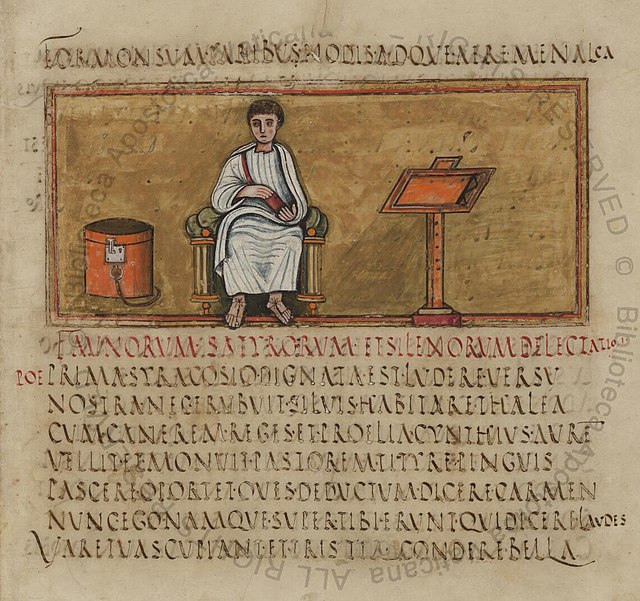In Greek mythology, Cerberus, often referred to as the hound of Hades, is a multi-headed dog that guards the gates of the Underworld to prevent the dead from leaving. He was the offspring of the monsters Echidna and Typhon, and was usually described as having three heads, a serpent for a tail, and snakes protruding from his body. Cerberus is primarily known for his capture by Heracles, the last of Heracles' twelve labours.
Heracles, wearing his characteristic lion-skin, club in right hand, leash in left, presenting a three-headed Cerberus, snakes coiling from his snouts, necks and front paws, to a frightened Eurystheus hiding in a giant pot. Caeretan hydria (c. 530 BC) from Caere (Louvre E701).
Cerberus and Hades/Serapis. Heraklion Archaeological Museum, Crete, Greece.
Heracles, chain in left hand, his club laid aside, calms a two-headed Cerberus, which has a snake protruding from each of his heads, a mane down his necks and back, and a snake tail. Cerberus is emerging from a portico, which represents the palace of Hades in the underworld. Between them, a tree represents the sacred grove of Hades' wife Persephone. On the far left, Athena stands, left arm extended. Amphora (c. 525–510 BC) from Vulci (Louvre F204).
Athena, Heracles, and a two-headed Cerberus, with mane down his necks and back. Hermes (not shown in the photograph) stands to the left of Athena. An amphora (c. 575–525 BC) from Kameiros, Rhodes (Louvre A481).
Greek mythology is the body of myths originally told by the ancient Greeks, and a genre of ancient Greek folklore, today absorbed alongside Roman mythology into the broader designation of classical mythology. These stories concern the ancient Greek religion's view of the origin and nature of the world; the lives and activities of deities, heroes, and mythological creatures; and the origins and significance of the ancient Greeks' cult and ritual practices. Modern scholars study the myths to shed light on the religious and political institutions of ancient Greece, and to better understand the nature of myth-making itself.
Achilles and Penthesileia by Exekias, c. 540 BC, British Museum, London
Prometheus (1868 by Gustave Moreau). The myth of Prometheus first was attested by Hesiod and then constituted the basis for a tragic trilogy of plays, possibly by Aeschylus, consisting of Prometheus Bound, Prometheus Unbound, and Prometheus Pyrphoros.
The Roman poet Virgil, here depicted in the fifth-century manuscript, the Vergilius Romanus, preserved details of Greek mythology in many of his writings.
Phaedra with an attendant, probably her nurse, a fresco from Pompeii, c. 60 – c. 20 BC








